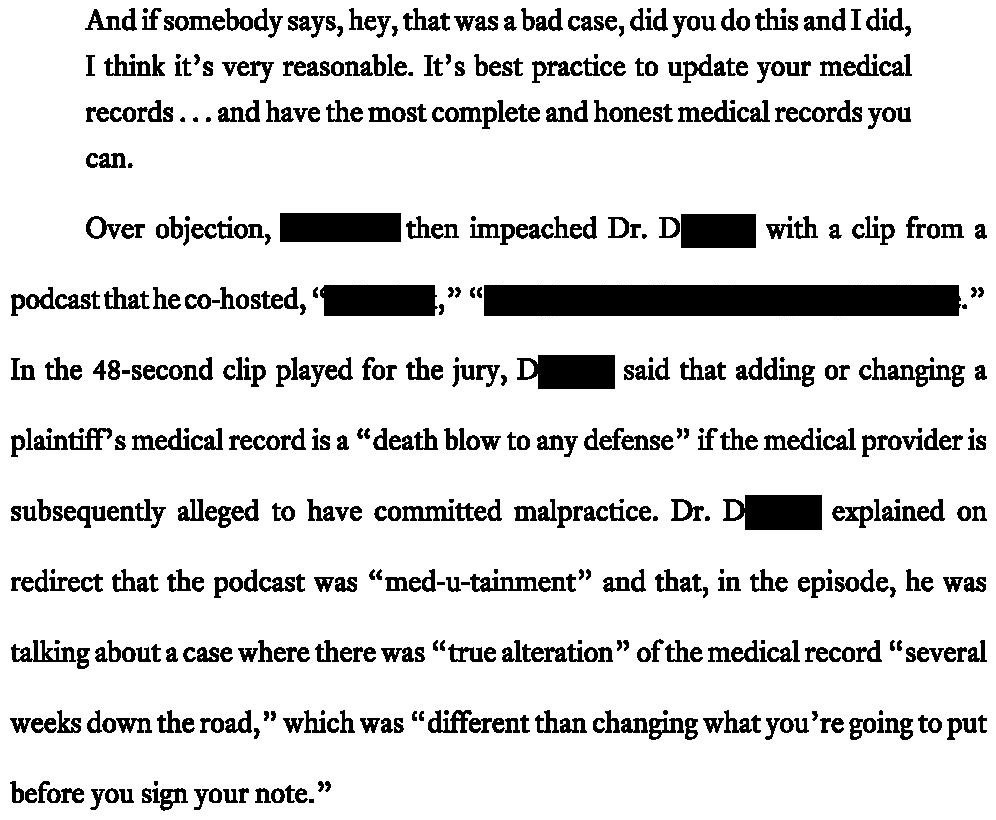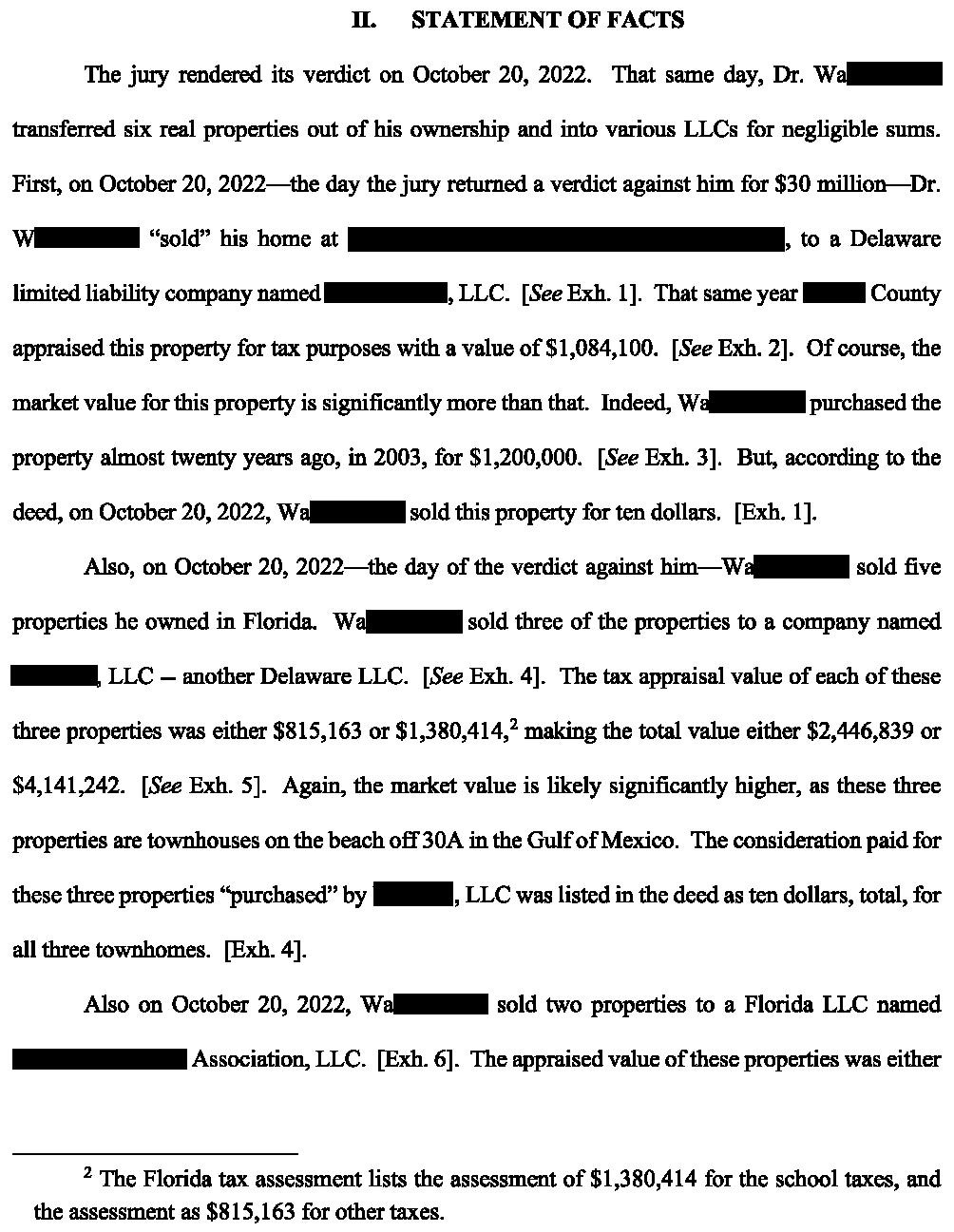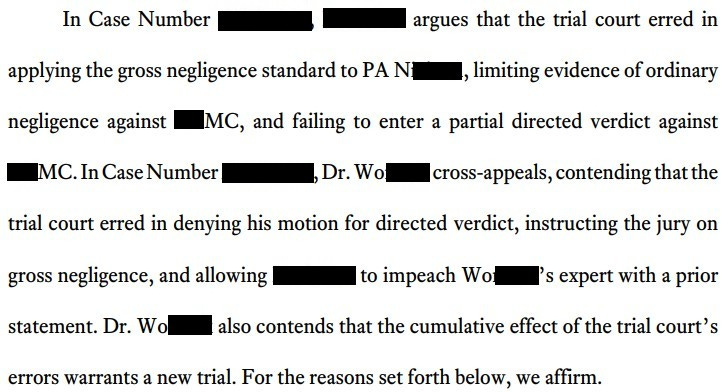This Locked-In Syndrome lawsuit I published a few years ago was already one of the wildest cases I’ve seen, and it just got even crazier.
To recap, a patient had his neck adjusted by a chiropractor, and immediately developed (or severely worsened) a vertebral artery dissection that developed into a massive posterior circulation stroke.
Due to a series of miscommunications and errors by the radiologist, neurologist, ER doctor, and ICU PA, the diagnosis was missed.
The patient was left with permanent locked-in syndrome.
The ER doctor went back and altered the medical record to try to make himself look better and pin the blame on the neurologist.
The trial went so badly for the ER doctor, it’s hard to put it into words.
It’s definitely the worst I’ve ever seen for multiple different reasons.
For example, the ER doctor’s defense expert witness claimed that it was fine to go back and alter the record, at which point the plaintiff’s attorney played a clip of him on a podcast saying the exact opposite.
Suffice it to say, the jury already felt that the ER doctor was dishonest based on his alteration of the record.
This situation was made worse when the defense expert’s testimony was shown to conflict with what he had previously said on a podcast.
I have no doubt that this perceived dishonesty and conflicting expert testimony contributed to the jury returning a massive verdict: $45,000,000 for the ER doctor and $30,000,000 for the radiologist.
Become a better doctor and improve your understanding of medicolegal issues.
Subscribe today.
Obviously, no doctor has the insurance or personal assets to pay those amounts.
Both doctors began the process of appealing.
However, the plaintiff also filed an appeal, which may seem odd given that they just won a $75,000,000 verdict.
Can you think of the reason why the plaintiff might appeal?
They had some legal arguments to justify their appeal, but the true reason is that the hospital itself (and its agents) was not found liable. The hospital is the only defendant that actually has the funds to pay $75,000,000. In fact, it was later discovered that this hospital had an insurance policy of over $50,000,000 (not to mention multiple other assets that could be collected).
In order to appeal, the radiologist and ER doctor had to post a supersedeas bond (appeal bond) that would guarantee that they would pay the verdict if they lost the appeal.
Immediately after losing, the neuroradiologist started transferring his vacation homes and millions of dollars of real estate assets to various LLCs.
The plaintiff’s attorneys were monitoring for this, and immediately advised the judge that they felt this was fraudulent.
The judge set the bond amount for the radiologist at $35,000,000.
The ER doctor did not try to hide any assets from the court.
As a recent residency graduate, he did not have many assets to begin with.
The ER doctor’s bond amount was set at $1,550,000.
Several months later, the plaintiff and the neuroradiologist reached a settlement.
The radiologist withdrew his intent to appeal.
I messaged the plaintiff’s attorney but the terms of the settlement were confidential and he would not say if the radiologist had to pay anything from his personal assets.
I’m always suspicious of the asset-protection schemes that doctors try, but maybe it worked for the radiologist?
The ER doctor’s malpractice insurance covered the $1,550,000 bond that was needed to continue the appeal.
The appeals court ultimately rejected the plaintiff’s appeal and the ER doctor’s appeal, affirming the lower court’s decision.
The ER doctor technically owes $45,000,000 (plus interest that is racking up faster than his annual salary).
This may seem like the end of the case, but it’s not.
What happens next is something called a “bad faith” lawsuit.
The ER doctor has now filed a separate lawsuit against his malpractice insurance company, claiming that they should have known to settle the case on his behalf before trial.
This is the first time I’ve seen a doctor bring a bad faith lawsuit against their malpractice insurer, so I’m not sure what to expect.
It certainly seems that the ER doctor is going to get dragged through multiple additional years of stress, depositions, meetings with attorneys, and general legal issues while this moves forward.
If he wins the bad faith lawsuit and is awarded $45+ million, he’ll be able to pay his debt to the original plaintiff.
If he loses, it seems he’s at the mercy of the plaintiffs if they try to come after his personal assets.
I know this lawsuit has been covered in the media, including the recent update about the appeal.
I would like to politely point out that these ad-supported media companies did not explain the full details of this appeals process or the dramatic financial circumstances.
Running a newsletter supported by subscribers lets me go into much more detail than you’ll find in any other media source, so that you can see the truth of what happened.
If you’re interested in supporting this work and seeing more incredible cases (that you can’t find anywhere else), consider subscribing.












What is so infuriating to me is that the person who caused the stroke, the chiropracter, was not sued!! This is a known, rare complication of manipulating the neck. If the stroke had been diagnosed at the first moment the patient arrived in the emergency room, the liklihood of a different outcome still seems very low. I am not a neurologist, but I don't think based on my knowledge of current practice, that posterior circulation strokes due to dissections are amenable to treatment.
I audibly said "holy shit" at least 5 times digesting this update.